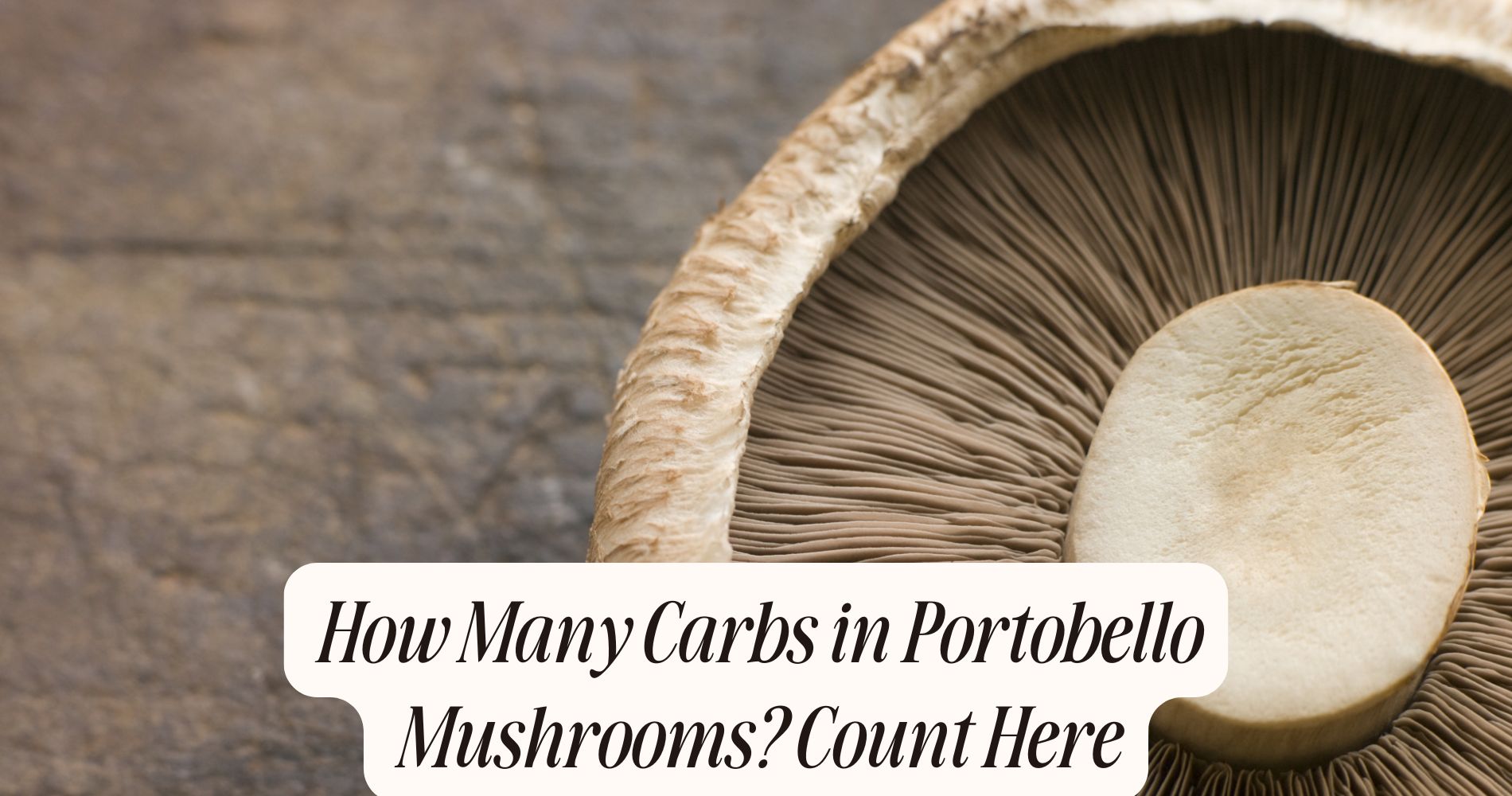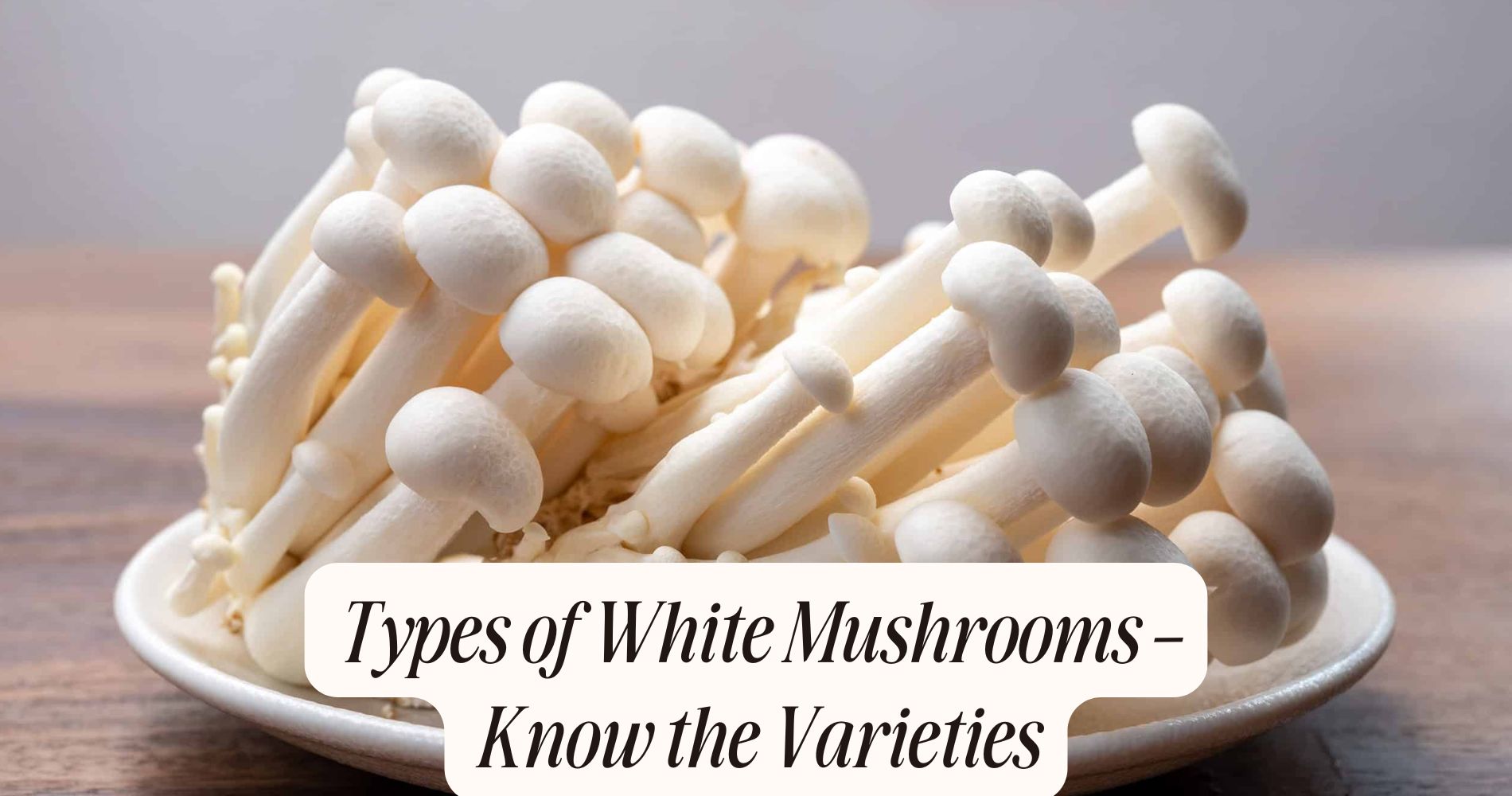
How Many Carbs in Portobello Mushrooms? Count Here
How many carbs in portobello mushrooms? You’ll find that one whole raw portobello mushroom, weighing about 84 grams, contains just over 3 grams of carbohydrates, with around 1.1 grams coming from dietary fiber. That means the net carbs are just slightly above 2 grams per serving, making portobello mushrooms a smart, low-carb option packed with essential vitamins, minerals, and fiber. They’re ideal for low-carb and nutrient-focused meal plans, especially compared to many other mushrooms. There’s more to discover about their impressive nutritional profile.
Understanding Carbohydrates in Mushrooms
Ever wondered how mushrooms fit into a low-carb diet? You’ll find that mushrooms, including portobellos, are naturally low in carbohydrates, making them a smart choice if you’re watching your intake. Their carb content remains low regardless of mushroom flavor profiles, whether you choose earthy portobellos or more delicate varieties.
Cultivation techniques, such as organic growing or controlled environments, don’t considerably alter the carbohydrate levels. Instead, these methods impact texture and taste.
Most of the carbs in mushrooms come from fiber and small amounts of natural sugars. Since fiber isn’t digested, it doesn’t raise blood sugar.
Nutritional Breakdown of Portobello Mushrooms
While portobello mushrooms are well known for their meaty texture and savory flavor, their nutrient profile is equally impressive. Compared to other culinary mushroom varieties, portobellos stand out for their low calorie count and high nutrient density.
You’ll get about 22 calories per 100 grams, along with modest protein and fiber. They’re a solid source of B vitamins, including riboflavin, niacin, and pantothenic acid, all essential for energy metabolism.

You’ll also benefit from potassium, selenium, and copper—minerals that support immune and nerve function.
Portobellos fit seamlessly into diverse mushroom flavor profiles, making them both versatile and nutritious.
Even with their robust taste, they remain low in fat and sodium, allowing you to enhance your meals without compromising on health.
Carb Content Per Serving Size
Curious about how many carbs you’re actually getting from portobello mushrooms? A standard serving size—one whole, raw portobello mushroom (about 84 grams)—contains roughly 3.3 grams of carbohydrates, including 1.1 grams of dietary fiber. That leaves you with just over 2 net grams of carbs per serving.
This low-carb profile fits seamlessly into most meal plans, especially if you’re watching your carb intake. Portobello mushrooms’ robust, meaty flavor profiles make them a favorite for both vegetarian and low-carb dishes. They absorb marinades well and hold up nicely during grilling or roasting.
For culinary pairing tips, try stuffing them with spinach and cheese or serving as a burger alternative. Their versatility and minimal carb content make them a smart, nutrient-focused choice.
Comparing Portobello Mushrooms to Other Mushrooms
Knowing the carb content of portobello mushrooms can help you make informed choices, but it’s also helpful to see how they stack up against other popular varieties. Portobellos provide about 3.9 grams of carbs per 100 grams, similar to cremini and white button mushrooms, which each have around 3.3 grams.

Shiitake mushrooms are slightly higher, averaging 7 grams per 100 grams. Oyster mushrooms fall in between, with about 6 grams of carbs.
Differences in mushroom flavor profiles arise from their natural compounds and can impact your recipe choices. Portobellos offer a meaty texture and robust flavor, while white buttons are milder.
Cultivation methods, such as substrate and environment, can also affect both carb content and flavor, making each variety unique.
Health Benefits Beyond Carbohydrates
Although you might focus on the carbohydrate content, portobello mushrooms provide a range of nutrients that support overall health. They're rich in B vitamins—especially riboflavin and niacin—which help your body convert food into energy and support nervous system health.
You'll also get selenium, an antioxidant mineral that protects cells from oxidative damage. Portobellos offer fiber, contributing to digestive health and satiety.
Their potassium content supports healthy blood pressure and muscle function.
Thanks to their culinary versatility, you can use portobello mushrooms as a meat alternative or in a variety of dishes, increasing your nutrient intake without excess calories.
However, be mindful of mushroom allergies, which can cause reactions in sensitive individuals. For most people, portobello mushrooms are a nutrient-dense, beneficial addition to your diet.
Are Portobello Mushrooms Keto-Friendly?
If you’re following a ketogenic diet, you’ll want to know how portobello mushrooms fit into your daily carb limits. Portobello mushrooms are considered keto-friendly due to their low carbohydrate content—just about 3 grams of net carbs per 100 grams.
Their nutrient density makes them an excellent choice for adding fiber, B vitamins, and minerals without exceeding your carb allowance. Thanks to modern mushroom cultivation, portobellos are widely available, making them a practical option for your keto meal planning.

Their meaty texture and versatility in various culinary uses—such as grilling, stuffing, or using as a burger bun—ensure you won’t feel deprived while keeping carbs in check. You can confidently include portobello mushrooms in your keto diet, supporting both taste and nutrition goals.
Creative Low-Carb Recipes Using Portobello Mushrooms
Whether you’re looking to cut carbs or boost nutrient intake, portobello mushrooms offer an adaptable foundation for inventive, low-carb meals. Thanks to advances in mushroom cultivation, these versatile fungi are widely available, fresh, and packed with fiber, potassium, and antioxidants.
You can easily swap portobellos for high-carb ingredients to create nutrient-dense options like stuffed mushroom caps filled with spinach and feta, or use them as “buns” for lean turkey burgers. Their meaty texture pairs well with a variety of culinary pairings, such as goat cheese, pesto, or roasted vegetables.
Grilled portobello slices also make a hearty base for low-carb pizzas, eliminating the need for dough. By integrating portobellos, you’ll enjoy satisfying flavors while keeping your carb intake in check.
Tips for Incorporating Portobello Mushrooms Into Your Diet
Since portobello mushrooms are naturally low in carbohydrates and rich in essential nutrients like selenium and B vitamins, you can seamlessly add them to your meals for both flavor and health benefits.
Maximize their umami-rich mushroom flavor profiles by grilling, roasting, or stuffing them—each method highlights their hearty texture and savory taste. Try using portobellos as a meat substitute in burgers or slice them into stir-fries and salads for extra nutrition without added carbs.
For superlative freshness, store portobello mushrooms in a paper bag in your refrigerator’s crisper drawer; this prevents moisture buildup and extends shelf life. Always clean them gently with a damp cloth instead of soaking, as excessive water can dilute their flavor and compromise texture.
Incorporate them regularly for nutrient diversity.
A Low-Carb, High-Impact Choice: SUPER MUSHROOM GUMMIES
If you’re mindful of carbs but still want to enjoy the benefits of mushrooms, try Well Gummies' SUPER MUSHROOM GUMMIES! These convenient, vegan gummies combine the power of 10 functional mushrooms into one delicious wild berry-flavored chew, without the carbs you’d find in whole mushrooms. Fuel your brain, boost your energy, and support your immune system naturally—with no jitters or crash. Enjoy the fresh taste of wild berries while keeping your carb intake in check. Shine all day with Well Gummies!
Frequently Asked Questions
Can You Eat Portobello Mushrooms Raw or Do They Need to Be Cooked?
You can choose raw consumption of portobello mushrooms, but cooking methods like grilling or sautéing improve digestibility and nutrient absorption. Cooking also reduces agaritine, a naturally occurring compound. Evidence suggests cooked portobellos offer better nutrient availability and safety.
How Should Portobello Mushrooms Be Stored for Maximum Freshness?
To maximize portobello mushrooms' freshness, use refrigeration techniques by placing them in a paper bag or a breathable storage container. Don’t seal tightly; this prevents excess moisture, preserving nutrients and texture. Replace the container if condensation forms.
Are Portobello Mushrooms Safe for People With Mushroom Allergies?
If you have a mushroom allergy, you shouldn't attempt safe consumption of portobello mushrooms. Evidence shows individuals with a mushroom allergy can react to any type, including portobello, regardless of their nutritional benefits or low carbohydrate content.
What Is the Best Way to Clean Portobello Mushrooms?
To clean portobello mushrooms, use gentle cleaning methods. Wipe them with a damp paper towel or soft brush—avoid soaking to preserve nutrients. Kitchen utensils like a small spoon help remove gills efficiently without damaging the mushroom.
Can Portobello Mushrooms Be Frozen for Later Use?
You can freeze portobello mushrooms, but for best results, blanch or sauté them first. Freezing portobellos this way preserves mushrooms’ texture and nutrients, reducing nutrient loss and sogginess when you thaw and cook them later.
Conclusion
Portobello mushrooms are a smart, low-carb choice, offering about 3-4 grams of carbohydrates per 100-gram serving. You’ll benefit from fiber, vitamins, and minerals without spiking your carb intake. Compared to other mushrooms, portobellos hold their own as a nutrient-dense, keto-friendly option. Add them to your meals for a satisfying, healthy boost. With their versatility and nutritional profile, you can enjoy portobellos guilt-free while supporting your health and staying within your carb goals.




